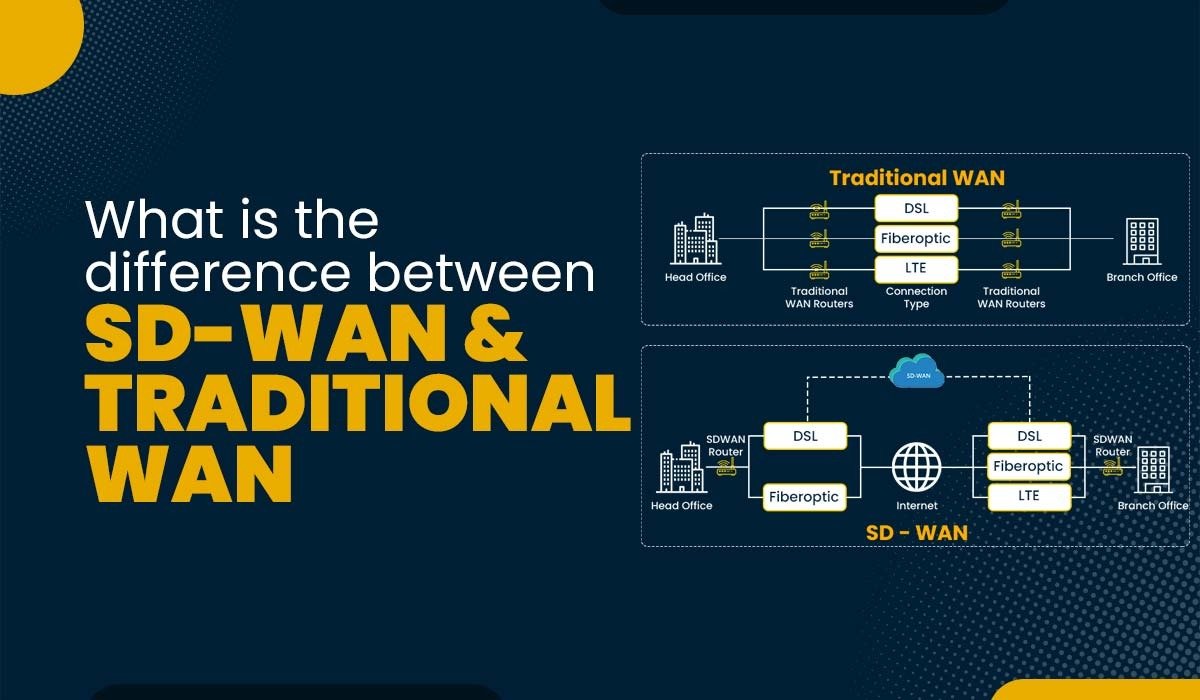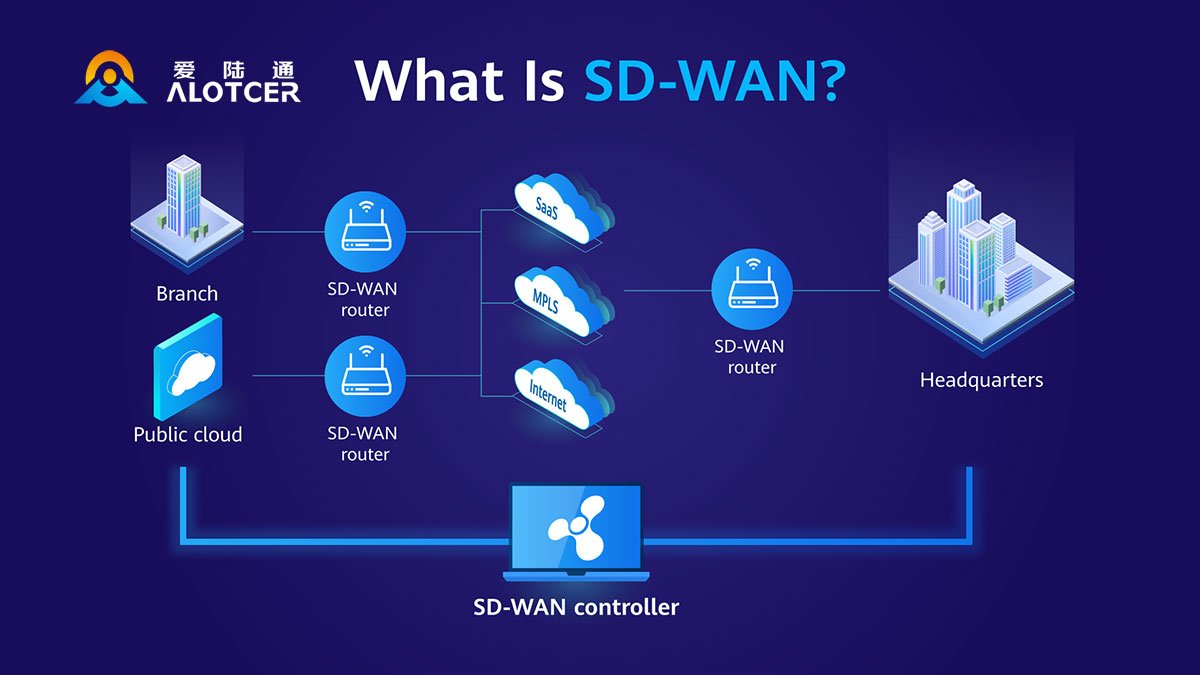The Evolution of Network Technology: From LAN to SD-WAN
- By -Mash
- Posted on
- Posted in Network Technology
Network technology has undergone significant transformations over the decades, evolving from simple Local Area Networks (LANs) to sophisticated Software-Defined Wide Area Networks (SD-WANs). This evolution has been driven by the need for increased connectivity, scalability, and efficiency in a rapidly changing technological landscape. This article explores the key stages in the evolution of network technology and examines the impact of these advancements on modern networking.

The Era of LANs
Early LANs: Local Area Networks (LANs) were among the earliest forms of network technology, designed to connect devices within a limited geographical area, such as an office or a building. Early LANs relied on technologies like Ethernet and Token Ring, providing basic connectivity for file sharing, printer access, and internal communications. LANs were characterized by their simplicity and relatively low cost, making them accessible for small to medium-sized organizations.
Network Protocols: The development of network protocols, such as the Ethernet standard (IEEE 802.3) and the Internet Protocol (IP), played a crucial role in LAN technology. Ethernet enabled high-speed data transfer within LANs, while IP provided a standardized method for addressing and routing data packets. These protocols laid the foundation for more advanced networking technologies.
The Rise of WANs
Wide Area Networks (WANs): As businesses expanded beyond local offices, the need for Wide Area Networks (WANs) arose. WANs connect geographically dispersed locations, enabling organizations to integrate their remote offices and branch locations. Early WAN technologies included leased lines, Frame Relay, and Asynchronous Transfer Mode (ATM), which offered dedicated connections and higher bandwidth compared to traditional LANs.
Challenges of Traditional WANs: Traditional WANs often faced challenges such as high costs, limited scalability, and complex management. Leased lines were expensive and required significant infrastructure investments, while Frame Relay and ATM had limitations in terms of bandwidth and flexibility. Additionally, managing WAN performance and security was often cumbersome and required specialized expertise.
The Advent of MPLS
Multiprotocol Label Switching (MPLS): In the late 1990s and early 2000s, Multiprotocol Label Switching (MPLS) emerged as a significant advancement in WAN technology. MPLS improved the efficiency and performance of WANs by using labels to route data packets through the network, rather than relying on traditional IP routing. This approach enabled faster data transfer, better traffic management, and support for multiple types of network traffic.
Benefits of MPLS: MPLS offered several benefits, including improved Quality of Service (QoS), enhanced network reliability, and the ability to support various services such as Voice over IP (VoIP) and Virtual Private Networks (VPNs). MPLS networks provided better performance and flexibility compared to traditional WAN technologies, making them a popular choice for enterprises with complex networking needs.
The Emergence of SD-WAN
Introduction to SD-WAN: Software-Defined Wide Area Network (SD-WAN) technology represents a significant leap forward in WAN evolution. SD-WAN leverages software-defined networking principles to provide a more flexible, cost-effective, and manageable approach to WAN connectivity. By abstracting the network control plane from the hardware, SD-WAN enables centralized management and dynamic optimization of network resources.
Key Features of SD-WAN:
- Dynamic Path Selection: SD-WAN uses dynamic path selection to route traffic over the most efficient network path based on real-time conditions. This feature improves application performance and reliability by automatically adjusting to changes in network quality and congestion.
- Centralized Management: SD-WAN provides a centralized management platform that simplifies network configuration, monitoring, and troubleshooting. Network administrators can manage multiple WAN connections, apply policies, and gain insights into network performance from a single interface.
- Cost Efficiency: SD-WAN reduces the reliance on expensive MPLS connections by leveraging a combination of broadband internet, LTE, and other cost-effective connectivity options. This approach lowers network costs while maintaining high performance and reliability.
- Enhanced Security: SD-WAN includes integrated security features such as encryption, firewall capabilities, and secure direct-to-cloud access. These features protect data in transit and ensure secure connections between remote sites and the cloud.
The Future of Network Technology
Network Function Virtualization (NFV): Network Function Virtualization (NFV) is an emerging technology that complements SD-WAN by virtualizing network functions such as firewalls, load balancers, and intrusion detection systems. NFV enables the deployment of these functions as virtual appliances, improving flexibility and reducing hardware costs.
5G Integration: The integration of 5G technology with SD-WAN promises to further enhance network performance and capabilities. 5G’s high-speed, low-latency connections will support advanced applications and services, enabling more efficient and reliable WAN connectivity.
Artificial Intelligence (AI) and Machine Learning (ML): AI and ML are increasingly being integrated into network management solutions, including SD-WAN. These technologies can automate network operations, optimize performance, and provide predictive analytics for proactive management.
Conclusion
The evolution of network technology from LANs to SD-WANs highlights the significant advancements made in connectivity, scalability, and efficiency. Each stage of this evolution has addressed the limitations of its predecessors, leading to more sophisticated and capable network solutions. As network technology continues to advance, businesses can expect even greater improvements in performance, flexibility, and cost-efficiency, driving the future of connectivity and digital transformation.



